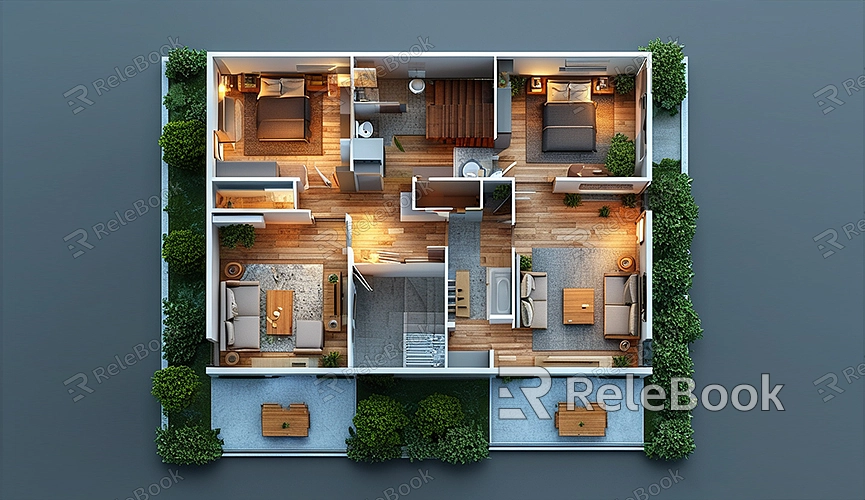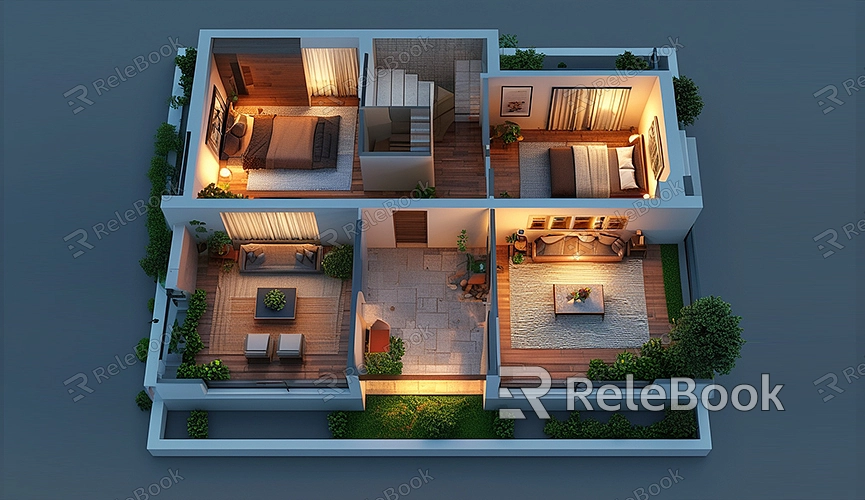How to Paint a 3D Model in Blender
Blender is a powerful 3D modeling and rendering software that not only allows you to create complex 3D models but also to add realistic colors and textures to them. Painting a 3D model is an essential step in enhancing the quality of your work. This guide will detail how to paint a 3D model in Blender, making your creations more vibrant and artistically expressive.
Preparation: Understanding Blender’s Material and Texture System
Before you start painting a 3D model, it’s important to understand Blender’s material and texture system. Blender uses "materials" to define a model's surface properties, including color, reflectivity, and transparency. Textures simulate surface details like wood grain, stone, or metal texture. In Blender, materials and textures are managed through a node system, allowing you to create unique effects by adjusting various node parameters.

Creating a Material and Applying Base Colors
First, create a base material for your 3D model. In Blender, select your model, go to the "Material Properties" panel, and click "New" to add a new material. You can then name the material and choose a base color. The base color provides the overall hue of the model and usually serves as the starting point for painting. In the "Material Properties" panel, you can select a color directly from the color picker or precisely control it using RGB values.
For example, if you’ve modeled a wooden chair in Blender, it will look like smooth plastic without materials and textures. By adding a wood material and applying a wood grain texture, the chair will appear more realistic, as if made from natural wood.
Adding Detail with Texture Maps
While base colors provide fundamental color effects, textures are necessary to make your model look more realistic. Texture maps can be imported as image files or generated procedurally within Blender. To apply textures to the model, you first need to perform UV unwrapping. UV unwrapping involves unfolding the 3D model’s surface into a 2D plane, allowing textures to be correctly mapped onto the model. After UV unwrapping, add an “Image Texture” node in the material node editor, load your texture map, and connect it to the “Base Color” input port. Adjust the texture’s scaling, translation, and rotation parameters to fine-tune how the texture displays on the model.
Adding Detail: Normal Maps and Bump Maps

In addition to color and texture, normal maps and bump maps are essential tools for adding depth to your model. Normal maps simulate lighting effects to create subtle surface bumps, while bump maps alter the model’s surface normals to affect shading directly. In Blender, you can combine normal maps and bump maps with materials using the node system to enhance model detail and realism. Ensure the resolution of these maps is high enough to avoid blurriness or distortion.
Creating Complex Effects with Gradients and Masks
To make your model’s colors richer and more natural, you can use gradient colors and masking techniques. In Blender, you can add gradient effects to the model using the “Color Gradient” node, such as transitioning colors from top to bottom or radiating outward from the center. Masking techniques allow you to apply different colors or textures to various parts of the model. For instance, you might use one material for metal parts and another for fabric parts. By adding a “Mix Color” node in the shader editor and using a mask to control the blend between materials, you can create complex visual effects.
Rendering and Checking Results
Once painting is complete, the final step is to render and check the results. In Blender, choose a rendering engine (such as Cycles or Eevee) to generate the final image. Pay attention to lighting settings, as lighting directly affects color appearance. Adjust the intensity, color, and position of light sources to ensure the final render meets your expectations. After rendering, carefully inspect the model’s details to see if the colors and textures are as expected. If needed, return to the material editor to make adjustments.
Painting a 3D model in Blender is a process that balances creativity and technical skill. From selecting base colors to applying complex textures, each step requires meticulous operation and thoughtful design. By effectively using Blender’s materials, textures, normal maps, and gradient effects, you can make your 3D models more vibrant and realistic. If you need high-quality 3D textures and HDRIs for your models and virtual scenes, you can download them for free from [Relebook](https://textures.relebook.com/). For exquisite 3D models, visit [Relebook](https://3dmodels.relebook.com/), where Relebook offers a wide range of premium 3D resources. Using these resources effectively will help optimize your 3D models and achieve the best results in your projects.

